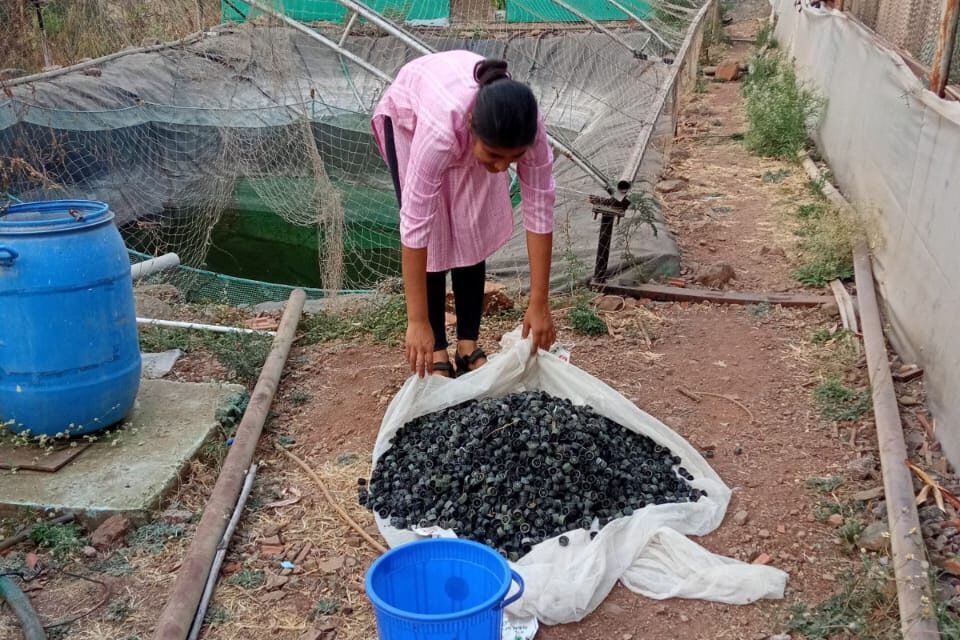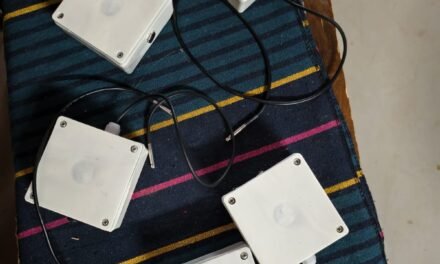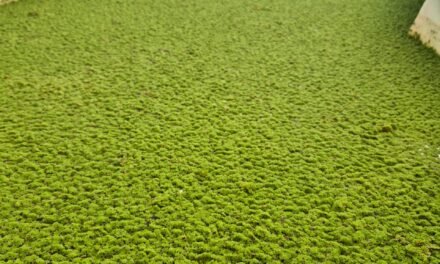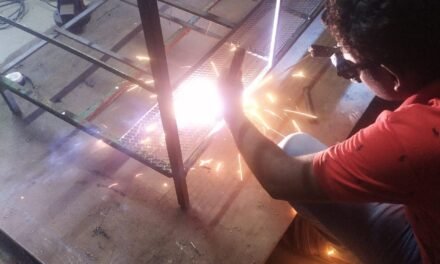Need of Project
Vigyan Ashram is working on Aquaponic combination of fish and vegetables growth simultaneously. This method stands couple of advantage the first and most important is eco-friendly. During our literature survey we hit upon the publication by Food and Agriculture Organization of United Nations viz FAO Fisheries and Aquaculture technical paper 589.This publication has detailed description for small scale Aquaponics. the project aim to benchmark the same at Vigyan Ashram PABAL Human urine contains significant amounts of N (nitrogen) and P (phosphorus); therefore it has been successfully used as fertilizer in different crops. So we decided to use Human urine.
objective
- To Develop urine based aquaponic system for 1000 lit. at Vigyan Ashram, Pabal.
- To study the human urine nutrient content
- To study the nitrification process
What is Aquaponics ?
Aquaponics is the integration of recirculating aquaculture and hydroponics in one production system. In aquaponic unit water from fish tank cycles through filters ,plant grow beds and then back to the filters. the fish wastes is removed from the water ,first using mechanical filters that removes solid waste and then through a biofilter that processes the dissolved wastes. The biofilters provided a location for bacteria to convert ammonia ,which is toxic for fish ,into nitrate ,a more accessible nutrients for plants . This process is called nitrification.This ammonia is metabolized by specific group of bacteria . these bacteria first convert the ammonia into nitrite (NO2) and then finally into nitrate (NO3). but nitrates are more easily assimilated by plant roots. Nitrifying bacteria are vital for the overall functioning of an aquaponics unit. Two types of bacteria
1. Ammonia Oxidizing Bacteria (AOB)
2. Nitrite Oxidizing Bacteria (NOB)
Human Urine
urine has the potential to be used as a fertilizer because of its nutrient content, availability and easy application to soils. The main nutrients (nitrogen, phosphorus, potassium and Sulphur) occur in water-soluble ionic form and are therefore readily available for plant uptake . The majority of the nutrients are excreted via urine. From nitrogen about 90%, phosphorus 50–65% and potassium, 50–80% is excreted in urine, In addition, urine contains Cl−, Na, Mg, Cu and other organic and inorganic compounds, which can be utilized for plant growth. The amount of nitrogen and phosphorus in urine varies depending on the diet, person and time of the day. Human urine contains large amount of N, P and K Moreover, it comprises trace elements, that may benefit the growth of plants which include B, Cu, Zn, Mo, Fe, Co and mn major fraction of nutrients is found in urine .
| constituents | Amount present |
| water | 95% |
| urea | 9.3 to 23.3gm/L |
| chloride | 1.87 to 8.4 gm/L |
| sodium | 1.17 to 4.39 gm/L |
| potassium | 0.750 to 2.61 gm/L |
| creatinine | 0.670 to 2.15 gm/L |
| Sulphur | 0.163 to1.80 gm/L |
Materials
1000 lit IBC tank
200 lit blue tank
100 lit MBBR
Cut IBC tank for media beds
Airotubes
Submersible pump
Methods
Some Parameters in starting Bacterial culture
Water pH
in aquaponic system pH of water is 6 to 6.5 is good for plants. pH less 6.5 is not good for nitrifying bacteria. higher pH leads higher NH3 toxicity. nitrification process leads to lower pH and pH basics as 8.2 that point stop nitrification.
How monitoring pH ?
lower pH
add to decreasing pH are phosphoric acid (H3PO4) Sulphuric acid (H2SO4) and other than use nitric acid (HNO3).never use citric acid for lowering pH because its antibacterial.
Increasing pH
Add calcium carbonate (CaCO3) or potassium carbonate (K2CO3) Which will increase both pH and hardness of water. there are many natural and inexpensive sources of calcium carbonate that can be added in systems. includes crushed eggshells, finely crushed seashells, coarse limestone grit and crushed chalk.
Water Temperature
water temperature is an important parameter for bacteria the ideal temperature range for bacteria growth and productivity is 17 to 34 ‘c . if water temperature drops below 17’c , bacteria productivity will decrease .
Dissolved Oxygen
nitrifying bacteria need an adequate level of dissolved oxygen (DO) in the water all the times. optimum level of DO are 4 to 8 mg/lit .
Preparation of starting culture 01/03/2023
In 200 lit blue tank taken 120 lit water that pH is maintained at 7.5 and 50 lit MBBR were added to the system. Aeration was given via air pumps. 2 ppm ammonia were added to the system. After one week 100 gm jaggary was added in to the system. Proper and essential bacterial growth. To Achieve efficient nitrification there should be some amount of nitrifying organisms that we can grow by giving additional amounts of carbon and other nutrients like calcium, molybdenum, Sulphur etc. required for its cell building.



This culture is introduced into ammonia is added in tank is becomes an initial food source of AOB bacteria which naturally occurring and recruit the system on their own. within 5 -7 days after first addition of ammonia AOB start forming colony and begin to oxidize ammonia into nitrite.Ammonia should be continuously, but cautiously, added to ensure adequate food for thev developing colony without becoming toxic. After another 5–7 days the nitrite levels in the water will have started to rise, which in turn attracts the NOB. As the NOB populations increase, the nitrite levels in the water will start to decline as nitrite is oxidized into nitrate. The full process is illustrated in Figure 5.3, which shows the trends of ammonia, nitrite and nitrate in the water over the first 20–25 days of cycling. The end of the cycling process is defined as when the nitrate level is steadily increasing, the nitrite level is 0 mg/litre and the ammonia level is less than 1 mg/litre. In good conditions, this takes about 25–40 days, but if the water temperature is cool, complete cycling may take up to two months to finish. At this point, a sufficient bacterial colony has formed and is actively converting the ammonia to nitrate.

few weeks in a recirculating system
Observation
1st week 04 /03/2023 to 11/03/2023
| Days | pH | pH( maintaining) | Added |
| 1 | 8.0 | 7.5 | 2 ml nitric acid (HNO3) |
| 2 | 8.1 | 7.5 | 3 ml nitric acid (HNO3) |
| 3 | 7.7 | 7.5 | 1.5ml nitric acid (HNO3) |
| 4 | 8.0 | 7.5 | 2 ml nitric acid (HNO3) |
| 5 | 7.9 | 7.5 | 1 ml nitric acid (HNO3) |
| 6 | 7.7 | 7.5 | 1 ml nitric acid (HNO3) |
As seen from above the table in 1st week in system we saw the pH level of the system is increasing daily .so we were added phosphoric acid to decreasing the pH .and maintaining the ammonia level in the system at 2 ppm .we were added 100 gm jaggary in the system as carbon source for the bacteria Proper and essential bacterial growth. To Achieve efficient nitrification there should be some amount of nitrifying organisms that we can grow by giving additional amounts of carbon and other nutrients like calcium, molybdenum, sulphur etc required for its cell building. Urine contains a lot of Nitrogen in the form of urea and salts in the form of Sodium chloride. Treatment of urea to generate nitrates biologically looks a viable solution and some amount of nitrogen which would go for cell building rather metabolism of the nitrifying bacteria. Treatment of salts would be done by growing plants who are more halophilic i.e can grow in high salt containing regions.
2nd week 12/03 /2023 to 17/03/2023
| Days | PH | pH maintaining |
| 1 | 7.4 | 7.5 (phosphoric acid were used lowering the pH) |
| 2 | 7.7 | 7.5 |
| 3 | 7.6 | 7.5 |
| 4 | 7.7 | 7.5 |
| 5 | 7.6 | 7.5 |
| 6 (17/03/2023) | 7.8 | 7.5 (checked ammonia and nitrite level ) |
In 2nd week pH level of system is less increased as compared to 1st week so we were added the calcium carbonate (CacO3) for 3 time maintaining pH at 7.5 also we were checked the ammonia is 0 ppm and nitrite is 0.5ppm
3rd week 18/03/2023 to 25/03/2023
| Days | PH | |
| 1 | 7.8 | |
| 2 | 7.6 | |
| 3 20/03/2023 | 7.4 | checked ammonia and nitrite level |
| 4 | 7.5 | |
| 5 22/03/2023 | 7.4 | Add 50 ml urine sample in the system |
| 6 | 7.5 |
In 3rd week we were observed the pH level of system is constant in this we were checked the ammonia (0.1ppm)and nitrite (0.5ppm) level.


week 4th
| Day | pH | Urine sample add | Amonia | Nitrite | Nitrate |
| 1 | 7.4 | 50 ml | 2 ppm | 0.0 | |
| 2 | 7.5 | ||||
| 3 | 7.5 | 50ml | 0 ppm | 0.5 | |
| 4 | 7.6 | 2 ppm | 0.0 | ||
| 5 | 7.6 | 50 ml | 0.5 ppm | 0.5 | |
| 6 | 7.4 | 2 ppm | 0.0 |
Month April
In the month of April, the main focus was on checking the formation of nitrate in urine aquaponics system. Maintaining the ammonia level at 2ppm
- Adding soil bag in urine aquaponics tank, daily adding 1 gram sugar as a carbon source for bacteria. Adding 400 ml urine sample daily Maintaining pH level.
- We observed 2 ppm ammonia formed 5 to 10 ppm nitrate, then nitrate level is increasing 40 to 80 ppm

Added 70ml urine sample in tank and add 20 lit water.

Autoclaved soil bag kept in tank
Observation
| Day | pH | Urine (ml) | ammonia (ppm) | nitrite (ppm) |
| 4/4/2023 | 7.8 | 70 ml | 2 ppm | 0.0 |
| 5/4/2023 | 7.6 | 1.0 | ||
| 6/4/2023 | 7.5 | 70 ml | 2 ppm | 0.0 |
| 7/4/2023 | 7.6 | 1.0 | ||
| 8/4/2023 | 7.6 | 70ml | 2 ppm | 0.0 |

Impacts of high nitrate : Nitrate is a far less toxic than the other forms of nitrogen. It is the most accessible form of nitrogen for plants, and the production of nitrate is the goal of the biofilter. Fish can tolerate levels of up to 300 mg/litre, with some fish tolerating levels as high as 400 mg/litre. High levels (> 250 mg/litre) will have a negative impact on plants, leading to excessive vegetative growth and hazardous accumulation of nitrates in leaves, which is dangerous for human health. It is recommended to keep the nitrate levels at 5–150 mg/litre and to exchange water when levels become higher.
| Chemical | Concentration in g/100 ml urine |
| Water | 95 |
| Urea | 2 |
| Sodium | 0.6 |
| Chloride | 0.6 |
| Sulfate | 0.18 |
| Potassium | 0.15 |
| Phosphate | 0.12 |
| Creatinine | 0.1 |
| Ammonia | 0.05 |
| Uric acid | 0.03 |
| Calcium | 0.015 |
| Magnesium | 0.01 |
| Protein | — |
| Glucose | — |
1 liter urine contains 7 ppm ammonia 1 ppm ammonia formed 2.7 ppm nitrite and 3.6 ppm nitrate

| Day | pH | Urine (ml) | ammonia (ppm) | nitrite (ppm) |
| 11/4/2023 | 7.7 | 70 ml | 2 ppm | 0.0 |
| 12/4/2023 | 8.6 | 1ppm | 1 | |
| 13/4/2023 | 7.9 | 70 ml | 2 ppm | 0.0 |
| 14/4/2023 | 7.7 | 1ppm | 1 | |
| 15/4/2023 | 7.6 | 70ml | 2 ppm | 0.0 |

nitrite and ammonia testing
Conversion of Ammonia to Nitrite: The first step of nitrification is the oxidation of ammonia to nitrite. Ammonia is produced through various biological processes, such as the decomposition of organic matter and the excretion of waste by organisms. Ammonia is toxic to many plants and aquatic organisms. Nitrifying bacteria, specifically ammonia-oxidizing bacteria (AOB), convert ammonia into nitrite (NO2-) through the process of ammonium oxidation. This conversion reduces the toxicity of ammonia and prepares it for further oxidation.

ammonia nitrate testing by using ammonia nitrate test kit
| Day | pH | Urine (ml) | ammonia (ppm) | nitrate (ppm) |
| 21/4/2023 | 7.8 | 90 ml | 2 ppm | 0.0 |
| 22/4/2023 | 7.4 | 10 ppm | ||
| 23/4/2023 | 7.8 | 90 ml | 2 ppm | 0.0 |
| 24/4/2023 | 7.7 | 10 ppm |

conclusion
In this month about 10ppm Nitrate formed from 2ppm Ammonia, Nitrate test was checked 2 times.
Month May
In the month of May the main focus was on the multiplication of nitrifying bacteria in urine culture tank for the more formation of nitrification process.
- Preparation of PDA media for the inoculation of BARC culture.
- Making mother culture of BARC culture for adding in urine culture tank for the multiplication of nitrifying bacteria. And increasing the rate of nitrification process.
observation
| Day | pH | pH( Maintaining) | Urine (ml) | ammonia (ppm) | nitrate (ppm) |
| 4 /5/2023 | 8.2 | 7.5 | 90 ml | 2 ppm | 0.0 |
| 5 /5/2023 | 7.9 | 7.4 | 40 ppm | ||
| 6 /5/2023 | 7.9 | 7.5 | 90 ml | 2 ppm | 0.0 |
| 9/5/2023 | 8.0 | 7.5 | 40 ppm |

nitrate testing
Conversion of Nitrite to Nitrate: The second step of nitrification is the oxidation of nitrite to nitrate. Nitrite is also toxic to many organisms, including plants and aquatic life. Nitrite-oxidizing bacteria (NOB) further oxidize nitrite to nitrate through the process of nitrite oxidation. Nitrate (NO3-) is a form of nitrogen that is readily available for uptake by plants and is less toxic to most organisms.
Date 10/5/2023 to 15/5/2023
| sr.no | pH | Urine (ml) | ammonia (ppm) | nitrate (ppm) |
| 1 | 7.8 | 90 ml | 2 ppm | 0.0 |
| 2 | 7.4 | 40 to 80 ppm | ||
| 3 | 7.8 | 90 ml | 2 ppm | 0.0 |
| 4 | 7.7 | 40 ppm |

nitrate formation 40 to 80 ppm
The ammonia concentration in the system ranged 2ppm with 2 ppm of ammonia being 40 to 80 ppm nitrate newly formed.

Date 19/5/2023 to 25/5/2023
| sr.no | pH | Urine (ml) | ammonia (ppm) | nitrate (ppm) |
| 1 | 7.8 | 90 ml | 2 ppm | 0.0 |
| 2 | 7.4 | 40 ppm | ||
| 3 | 7.8 | 90 ml | 2 ppm | 0.0 |
| 4 | 7.7 | 40 ppm |
JUNE
ABOUT BACTERIAL CULTURE
AUTOTROPHIC AND HETEROTROPHIC BACTERIA
Chemosynthetic autotrophic bacteria derive their energy from inorganic compounds . And heterotrophic bacteria derive their energy from organic compounds, Nitrifying bacteria are primarily autotrophs which consume Carbon di oxide and obligate aerobes which require oxygen to grow. In the autotrophic nitrification process as opposed to heterotrophic processes very small amount of bacterial biomass are produced. And because of the relatively slow maximum growth rate of nitrifying bacteria in a suspended growth process it becomes very easy to wash out the nitrifying bacteria as opposed to a fixed film system.

Isolation of nitrifying bacteria
PROTOCOL OF MAKING BARC MOTHER CULTURE
AIM: Mass multiplication of BARC culture.
NEED:
BARC culture contains the consortium bacteria, this bacteria helps for the
formation of nitrate which is helpful for the growth of plants. Due to the limited
amount of BARC available in the laboratory, mass multiplication of BARC is
needed.
REQUIRMENTS:
GLASSWARE
Beakers
Conical flask
Measuring cylinder
Petri plates
INSTRUMENTS
Autoclave
Incubator
Laminar air flow
Rotary shaker
pH meter
MISCELLANEOUS
Hand gloves
Face mask
Micro tips and micropipettes
Cotton plug
Inoculation loop
CHEMICALS
PDA media
NA media
Distilled water
70% alcohol
PROCEDURE
For Plating of BARC culture:
- Prepared PDA and NA media.
- Autoclaved media, petri plates, distilled water, test tubes, spreader, micro tips at
121 °C temperature and 15 lbp pressure for 20 min. - For Maintaining aseptic condition : At the same time, clean LAF(laminar air
flow) using 70% alcohol and ON UV light for 15-20 min.after 20 min OFF UV
light and and ON blower and day light. - Then all remaining procedure carried out under aseptic conditions.
- After sterilization, media poured into petri plates (approximately 30 ml/plate)
- After solidification of media, add 0.2 ml of aliquot of BARC from test tube on
petri plate. And spread equally on whole petri plate. - Follow same protocol for all the petri plates with same concentration of BARC
culture and spread equally by using spreader. - Packed petri plates with Para film. And kept it in incubator at 37°C temperature
for 4/5 days.
INCUBATION.
Requirements:
For mass multiplication:
- NB broth
- Beakers
- Wire loop(inoculation loop)
- LAF
- Rotary shaker.
PROTOCOL:
For mass multiplication:
- After incubation of 5 days. Growth of MOS has been completed.
- Making NB broth and sterilized by using autoclave that is 121°C temp and 15
lbp pressure for 20 min. - After the complete cooling of NB broth, microbial colonies from incubated
plates are suspended into the broth with the help of wire loop. - Generally for 400 ml of broth requires two plates of incubated MOS.
- After suspension this broth is kept on rotary shaker for multiplication of bacteria
at 125 rpm for 5 days. - After 5 days We can store this culture in refridgarator.
observation
| Day | pH | Urine (ml) | ammonia (ppm) | nitrate (ppm) |
| 21/6/2023 | 7.8 | 90 ml | 2 ppm | 0.0 |
| 22/62023 | 7.4 | 45 ppm | ||
| 23/6/2023 | 7.8 | 90 ml | 2 ppm | 0.0 |
| 24/6/2023 | 7.6 | 100 ml | 2 ppm | 0.0 |
urine hydroponic setup
JULY
week 1
After doing all the trials to see how much nitrate was produced from urine till the month of July, I started the flood and drain system of the hydroponic system. First I cleaned the system. And then checked whether the system is running or not and started the system properly. Checked her connection. I decided to grow spinach in that system. For that, I first germinated the spinach seeds in the cocopeat and then put the seedlings in the flood and drain system. I poured the nitrate water produced from urine into the lower bucket and then with the help of the 18 watt motor in the bucket, I released the water to the root of the parent. After every 10 minutes the water comes to the roots and drains back into the bucket below.
week 2 10 July to 17 july
in hydroponic system spinach was sowing .in cocopit.after a week spinach seedling transfer into hydroponic system
spinach was transfer into hydroponic system after 1 week .the 3 bucket was fillup with nitrite water then flood and drain system started .spinach was grown slowly .
week 3
urine hydroponic system started .the nitrite was formed 40 to 60 ppm ratio
Spinach
Spinach is one of the most desirable dark green leafy vegetables because it is high in beta carotene (pro vitamin A) and folate, and is also a good source of vitamin C, calcium, iron, phosphorous, sodium and potassium. It is high in the carotenoid lutein which has been shown to prevent age related macular degeneration. Spinach is a good source of antioxidants and has one of the highest ORAC (oxygen radical absorbance capacity) values of any vegetable.

AUGUST
in month of August urine hydroponic system spinach was grown but not healthy some magnesium deficiency observed in spinach leaves. spinach leaf became yellowish .after discussed with Dixit sir .decided to spray mgso4 spray on spinach .
some plant brunt of the shortage of water supply .so I decided to again plantation new spinach batch in cocopeat.
after a week new batch of spinach seedling was transfer into hydroponic system .

new spinach batch

the new batch of spinach was grown good .
September
Since there is no magnesium in human urine, we noticed the deficiency of magnesium in spinach and then we gave mgso4 spray. Within 24 hours after the spray, we saw the results, the yellowed spinach turned green

Spinach has grown very well now. As all the ingredients required for spinach are available in proper quantity.
The ingredients required for spinach are as follows
| Nutrients | Palak Nutrients in mg / (100g) | Urine nutrients in mg/ 100 ml urine | Urine nutrients in mg/ 1Litre urine |
| Calcium | 99 | 15 | 150 |
| Iron | 2.71 | 0.0205 | 0.205 |
| Magnesium | 79 | 10 | 100 |
| Phosphorous | 49 | 120(phosphate) | 382.9(phosphorous) |
| Potassium | 558 | 150 | 1500 |
| Sodium | 79 | 600 | 6000 |
| Zinc | 0.53 | 0.011 | 0.11 |
| Copper | 0.13 | 0.0155 | 0.155 |
| Manganese | 0.897 | 0 | 0 |
| Selenium | 1 | – | 0 |
| Nitrogen | 490 | 920 | 9200 |
| Chloride | – | 600 | 6000 |
| Sulfur | 0.0042 | 180 | 1800 |
Since our country of India has a very large population, if we do the calculations, we will get a very large amount of human sperm. About 7 ppm of ammonia is found in one liter of urine and from 1 ppm of ammonia we get 360 ppm of nitrate.1 liter contains 9 to 23 g/L urea and the market price of 50 kg urea is 250rs.





